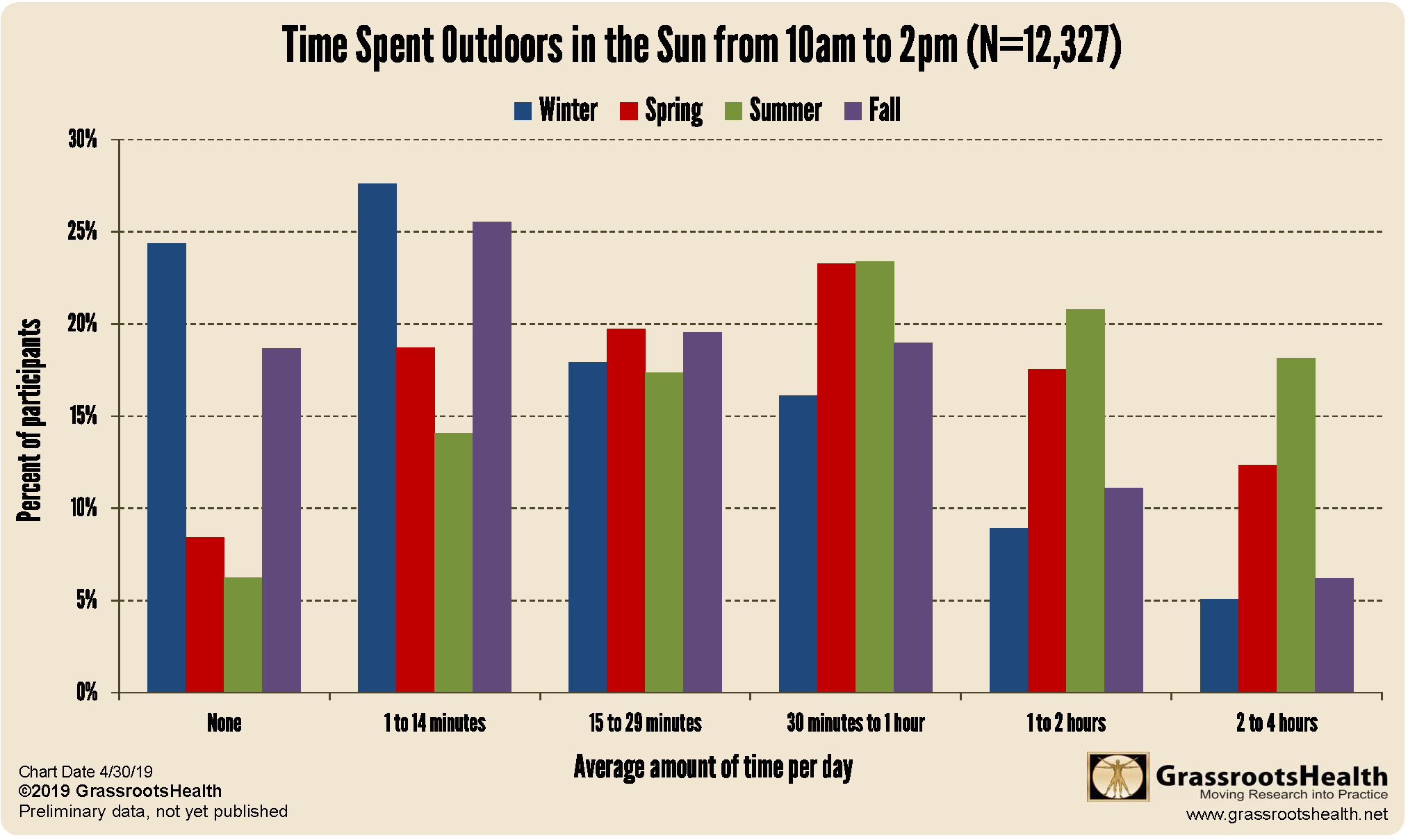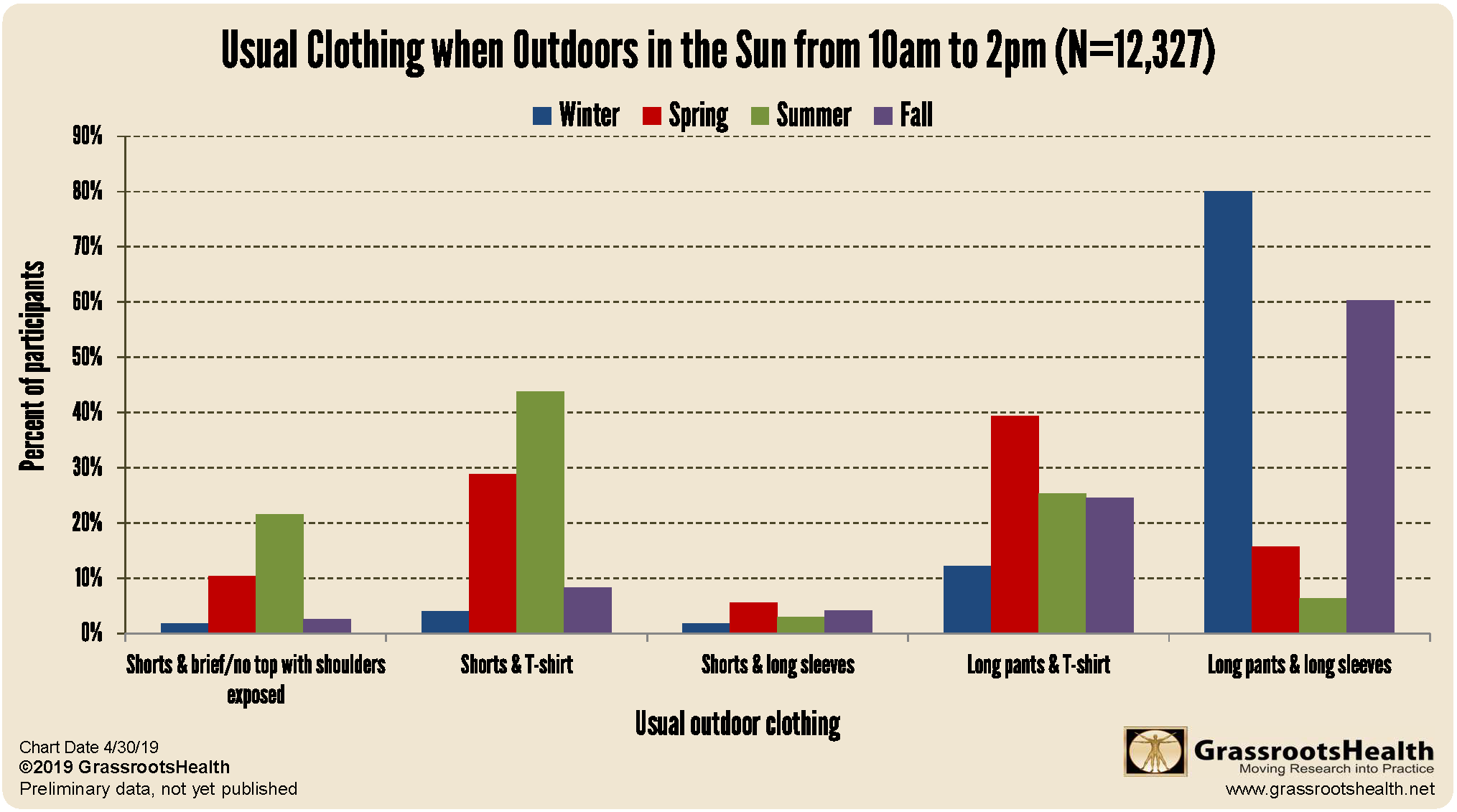Published on May 2, 2019
Since we know that sun exposure is an important factor in the natural synthesis of vitamin D, we ask our D*action participants a few questions about their sun habits. In each questionnaire, participants are asked how many minutes on average they spend outdoors in the sun between 10 am and 2 pm for each season. Participants are also asked to describe their usual clothing when outdoors. The charts below summarize the results for these two questions.
As expected, time spent outdoors and usual clothing varied by season. Only 7% of participants spent no time in the mid-day sun in any season. During the summer when UVB is at the peak, 20% spent less than 15 minutes in the mid-day sun, 41% spent between 15 and 60 minutes, and 39% spent more than 1 hour.
While just being outside and enjoying the sun can feel good, for vitamin D production, it is necessary to have skin exposed. As seen in the chart below, the most common clothing worn in the mid-day sun during the summer was shorts and a T-shirt.
Combining both questions, a majority (76%) of participants spent 15 minutes or more in the mid-day sun with at least their arms or legs exposed during one or more seasons. These results show that many GrassrootsHealth participants are harnessing the power of the sun for health!
Are you using sun exposure as a source of vitamin D?
Is sun exposure helping to improve your vitamin D level? Make sure you know your vitamin D level, and see if you are in the target range of 40-60 ng/ml (100-150 nmol/L). Find out your levels today! Log on to the shop (click the link below) to get your tests and see for yourself if your levels can be improved. Use coupon code SunMonth to receive 15% off plus free shipping during Sunshine Month only!
Make sure you track your results before and after, about every 6 months!
Click Here to Access the Shop Page
How can I track my sun exposure and my vitamin D levels?
To help you track your sun exposure and nutrient levels, GrassrootsHealth has created an online tracking system called myData-myAnswers. You can also track your supplemental and dietary nutrient intake to see how they impact your nutrient levels. Check it out today!









